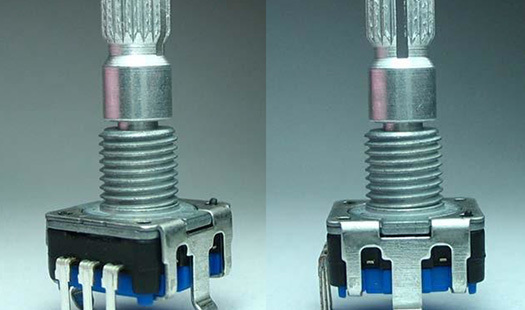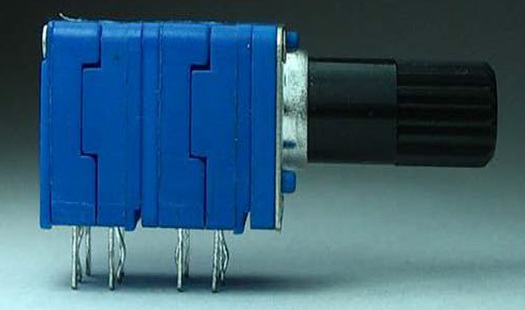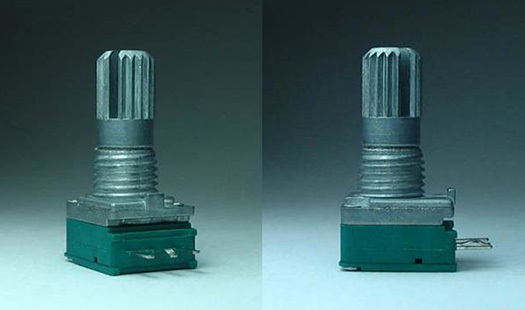Exploring the Versatile Applications of Dual Gang Potentiometers in Electronics
Jul 31,2025
Exploring the Versatile Applications of Dual Gang Potentiometers in Electronics
Table of Contents
1. Introduction to Dual Gang Potentiometers
2. Understanding the Mechanism of Dual Gang Potentiometers
3. Key Features of Dual Gang Potentiometers
4. Applications in Consumer Electronics
4.1 Volume Control in Audio Equipment
4.2 Tone Adjustment in Musical Instruments
5. Industrial Applications of Dual
Exploring the Versatile Applications of Dual Gang Potentiometers in Electronics
Table of Contents
1. Introduction to Dual Gang Potentiometers
2. Understanding the Mechanism of Dual Gang Potentiometers
3. Key Features of Dual Gang Potentiometers
4. Applications in Consumer Electronics
4.1 Volume Control in Audio Equipment
4.2 Tone Adjustment in Musical Instruments
5. Industrial Applications of Dual Gang Potentiometers
5.1 Control Systems in Machinery
5.2 Calibration Tools in Measurement Devices
6. The Role of Dual Gang Potentiometers in Automotive Technology
7. Design Considerations When Using Dual Gang Potentiometers
7.1 Selecting the Right Potentiometer for Your Project
7.2 Troubleshooting Common Issues
8. Future Trends in Dual Gang Potentiometer Technology
9. Frequently Asked Questions (FAQs)
10. Conclusion
1. Introduction to Dual Gang Potentiometers
Dual gang potentiometers are crucial components in electronic circuits, allowing for precise control of electrical resistance. Essentially, a dual gang potentiometer features two resistive elements connected to a common shaft. This design enables the simultaneous adjustment of two separate circuits or parameters, making them invaluable in various applications.
2. Understanding the Mechanism of Dual Gang Potentiometers
At the heart of the dual gang potentiometer lies a simple yet effective design. Each gang consists of a resistive track and a wiper. As the user turns the knob, the wiper moves along the resistive track, altering the resistance in the circuit. This mechanism allows for smooth and gradual changes in voltage or current, which can be critical for achieving precise functionalities in electronic devices.
3. Key Features of Dual Gang Potentiometers
Several features make dual gang potentiometers highly sought after in electronics:
- **Versatility**: They can be utilized in various applications, from audio equipment to industrial machinery.
- **Simplicity**: Their straightforward design allows for easy integration into different circuits.
- **Precision**: With fine-tuning capabilities, they offer better control compared to single gang potentiometers.
4. Applications in Consumer Electronics
Consumer electronics heavily rely on dual gang potentiometers for user interface adjustments.
4.1 Volume Control in Audio Equipment
In audio devices, dual gang potentiometers serve as volume controls, allowing users to adjust sound levels seamlessly. By manipulating the resistance, users can increase or decrease the audio output without introducing significant distortion, ensuring high-quality sound reproduction.
4.2 Tone Adjustment in Musical Instruments
Musical instruments, particularly electric guitars and synthesizers, utilize dual gang potentiometers for tone control. This allows musicians to modify the sound characteristics, enhancing their overall performance and creativity. The simultaneous control of two parameters enables richer sound textures and nuances.
5. Industrial Applications of Dual Gang Potentiometers
In industrial settings, dual gang potentiometers play a vital role in equipment calibration and control systems.
5.1 Control Systems in Machinery
Many industrial machines use dual gang potentiometers to regulate operational parameters such as speed and torque. By adjusting these settings, operators can optimize machine performance, improve efficiency, and reduce wear and tear.
5.2 Calibration Tools in Measurement Devices
Calibration devices often incorporate dual gang potentiometers to ensure accurate readings. These potentiometers allow technicians to fine-tune equipment settings, ensuring that measurements remain precise and reliable over time.
6. The Role of Dual Gang Potentiometers in Automotive Technology
The automotive industry has embraced dual gang potentiometers for various applications, from climate control systems to advanced infotainment interfaces. They provide drivers and passengers with intuitive control over numerous functionalities, enhancing the overall driving experience.
7. Design Considerations When Using Dual Gang Potentiometers
When designing an electronic circuit incorporating dual gang potentiometers, several factors should be considered.
7.1 Selecting the Right Potentiometer for Your Project
Choosing the correct dual gang potentiometer involves evaluating parameters such as resistance value, taper (linear or logarithmic), and physical size. These factors will influence the performance and compatibility of the potentiometer with your circuit.
7.2 Troubleshooting Common Issues
While dual gang potentiometers are generally reliable, issues may arise. Common problems include noise, inconsistent resistance, or mechanical failure. Regular maintenance and proper installation can mitigate these issues.
8. Future Trends in Dual Gang Potentiometer Technology
As technology advances, the design and functionality of dual gang potentiometers are evolving. Innovations such as digital potentiometers are gaining traction, offering enhanced features like programmability and integration with microcontrollers. These advancements will likely expand the applications of dual gang potentiometers in emerging electronics.
9. Frequently Asked Questions (FAQs)
What is the difference between single gang and dual gang potentiometers?
Dual gang potentiometers have two independent circuits that can be adjusted simultaneously, while single gang potentiometers have only one.
How do I choose the right dual gang potentiometer for my application?
Consider factors such as resistance value, taper (linear or logarithmic), and size to ensure compatibility with your specific circuit needs.
Can dual gang potentiometers be used in digital applications?
Yes, dual gang potentiometers, including their digital variants, are increasingly used in digital circuits, particularly for user interfaces and control systems.
What are the common applications of dual gang potentiometers?
Common applications include volume control in audio devices, tone adjustment in musical instruments, and precise adjustments in industrial machinery.
How do I troubleshoot a malfunctioning dual gang potentiometer?
Check for physical damage, ensure proper connections, and use a multimeter to measure resistance across the terminals to identify issues.
10. Conclusion
In summary, dual gang potentiometers are undeniably significant in the realm of electronics. Their ability to control two circuits simultaneously makes them versatile and valuable in many applications, from consumer electronics to industrial machinery. Understanding their functions, features, and applications can enhance your design and implementation of electronic systems. As technology continues to advance, we can expect further innovations in dual gang potentiometer technology, paving the way for more sophisticated electronic solutions. Embracing these components will undoubtedly lead to improved functionalities and user experiences across various industries.
PREVIOUS:
More Information
More Information
RECOMMENDED










